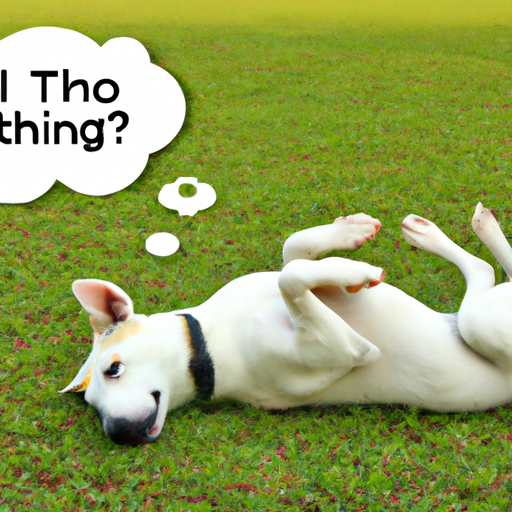If you are a dog owner, you have probably witnessed your pet rolling on the ground, in the grass, or even in something smelly. The sight of a dog rolling around can be adorable and amusing, but have you ever wondered why they do it? This behavior, common in dogs of all breeds and ages, has puzzled dog owners for years. In this article, we’ll explore the reasons why dogs roll.
Table of Contents
Key Takeaways
- Dogs rolling can be attributed to evolutionary instincts, communication needs, seeking comfort, or health issues.
- Understanding why your dog rolls can help you provide better care for your furry friend.
- If your dog’s rolling behavior seems excessive or is accompanied by other signs of discomfort, it may be time to visit a vet.
Evolutionary Reasons
Dogs are descendants of wolves and have inherited some of their ancestors’ behaviors. Wolves often roll in the scent of other animals to mask their own smell, a survival tactic when hunting prey or avoiding predators. While your pet dog doesn’t need to hunt for food or hide from predators, this instinctual behavior may still be present. You can learn more about the evolutionary behaviors of dogs here.
Communication
Dogs are social creatures and use various methods to communicate, both with humans and other dogs. When a dog rolls, it may be trying to pick up a scent or leave its own. This behavior can be a way for dogs to tell other dogs where they’ve been or what they’ve found. This article on dog communication offers more insight into how dogs use scent marking for communication.
Comfort and Pleasure
Sometimes, the reason why dogs roll is simply because it feels good. Dogs may roll on their backs to scratch a hard-to-reach itch or to wiggle against a textured surface that feels good on their skin and fur. They may also roll in the grass to cool down on a hot day.
Moreover, rolling can serve as a form of play for dogs. They might roll over during play as a submissive gesture, or to engage their playmate in a rollicking game of chase. This post on dog play behavior might help you understand this better.
Health Issues
While rolling is usually a normal canine behavior, excessive rolling could indicate a health issue. Dogs might roll to alleviate discomfort from skin irritations, allergies, or parasites like fleas and ticks. If your dog is rolling excessively and also shows signs of discomfort like scratching, biting, or redness, it’s a good idea to consult a vet. This guide on common dog health problems might be of help.
Frequently Asked Questions
1. Is it normal for my dog to roll after a bath?
Yes, it’s quite common. Some dogs might roll after a bath to dry themselves off or to get rid of the clean smell, which masks their natural scent.
2. Why does my dog roll in smelly stuff?
This could be an instinctual behavior inherited from their wolf ancestors. Dogs might roll in smelly stuff to mask their own scent, which would have been beneficial for hunting or avoiding predators.
3. Should I stop my dog from rolling?
Generally, rolling is a normal and harmless canine behavior. However, if your dog is rolling in something harmful or dirty, you should intervene. Also, excessive rolling accompanied by signs of discomfort could indicate a health issue and should be checked by a vet.
4. Why does my dog roll on his toys?
Your dog might be trying to leave their scent on the toys, marking them as their own. This is a normal behavior related to their instinct to claim and protect resources.
To conclude, there are various reasons why dogs roll, ranging from instinctual behaviors to health issues. As a responsible dog owner, understanding these behaviors can help you provide a better environment for your furry friend. Keep an eye on your pet’s behavior and don’t hesitate to seek professional help if something seems out of the ordinary. For more tips on understanding and caring for your dog, check out our dog care guide.



